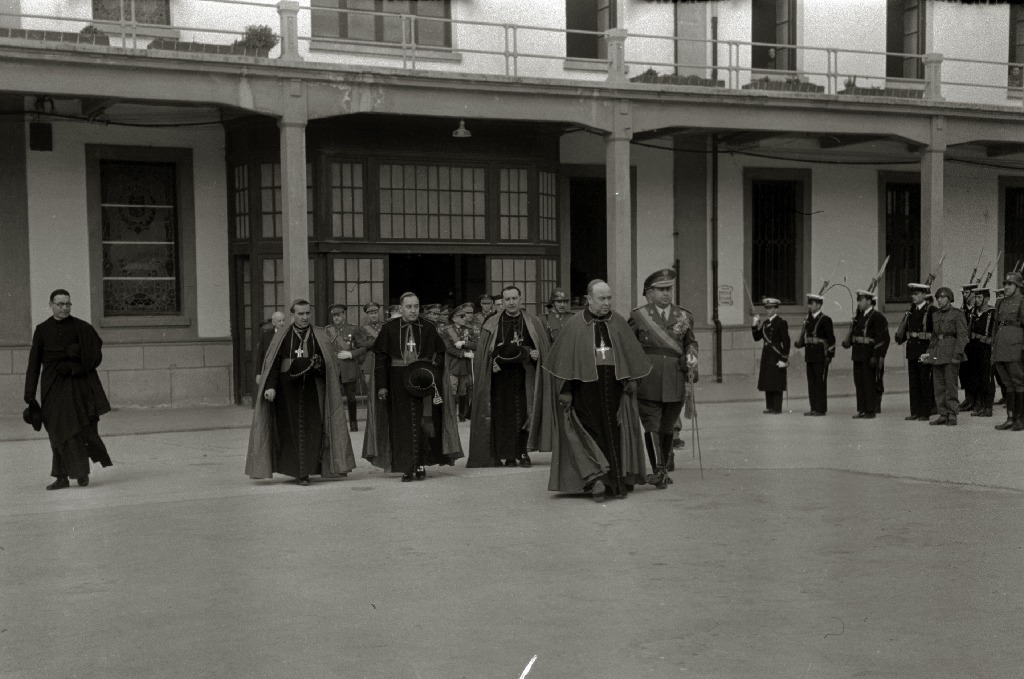
- The negotiations have borne fruit: In exchange for the support of the PNV to the Spanish budgets, the Government of Pedro Sánchez has committed itself to ceding the lands that the Army has occupied in San Sebastián in the last century. The space where the Loiola barracks are located can be destined for civil housing and in the last century the installations linked to some of the darkest chapters in the history of the city will disappear.

Among the points agreed by the PNV in exchange for supporting the budgets of the Spanish Government, there is a historic decision for Donostia-San Sebastián: The Spanish Army leaves the Loiola headquarters and recovers the 20 hectares occupied by this infrastructure. The City Hall of Donostia-San Sebastian would buy the land of Loiola from the Government of Spain to move from military to civilian use and probably to build houses there.
If we look at the attitude of the Spanish Government on this issue, it is a change of 180 degrees: just a month ago the Government of Sánchez, through the Secretary of State for Defence, closed the doors to that possibility, but it seems that the urgent need of the coalition government PSOE-UP to draw the budgets will have more weight.
The Dark History of San Sebastian
With the decision, the city will recover an emblematic place occupied for a whole century by the Spanish military: The construction works of the Loiola barracks began in the 1920s, after the castle of Urgull, until then used by the military, was reduced to the number of soldiers who wanted to move to San Sebastian. The headquarters was opened in 1926, when the first 170,000 square meters were available.

Since then, some of the blackest chapters in the history of San Sebastian have been related to these facilities, among other things because in the Second War of 1936 they left. Military rebels against the Republic, organized in two columns towards the city center, one by Prim Street and the other by Urbieta. Several groups on the right also joined them, including Phalanx.
The city was able to resist this first attack, barricades were installed and it was a historic battle on Urbieta Street, which stands out for the great prominence of the anarchists. Although some 150 people died among the opponents, on 23 July the soldiers who had occupied the Hotel Maria Cristina managed to surrender and the rest of those who wanted to take the city also retired to Egia.
The military coup d ' état was entrenched at the Loiola headquarters and the Republic ' s supporters received military assistance from Bilbao. As a result, the barracks were besieged until 28 July was surrendered by the soldiers inside them. In the book Verano del 36, memoirs of a gudari by Mario Salegi tells firsthand what happened in the city in the ten days that separated Loiola's barracks from the coup d'état. However, as you know, San Sebastian fell into the hands of the fascists that same year.
In addition to the military, NATO and the CNI have been in Syria.
Since then, the Spanish military has used the Loiola barracks throughout the Franco dictatorship, mainly for the soldiers of the ground army. In 2012, among the explanations offered by the then Secretary of State for Defense, Pedro Argüelles, to reject the request for the military expulsion of Donostia-San Sebastián, he explained exactly what is in Loiola: two barracks, a logistic building inhabitable by the army leaders, 24 homes for soldiers destined to San Sebastian and two housing blocks that, although they have different types of use, “for security reasons.”
However, in addition to the use that the Spanish Army has given to this barracks for years, it has also performed other functions. It has been used to protect the work of the Spanish State Intelligence Services (CNI) and also to house soldiers from the passing units of NATO missions.